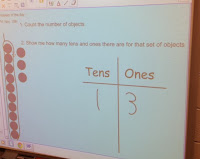Teachers need to be learners, alongside their students. To do this, we connect. Connect with colleagues to share strategies, plan for the success of individual learners, and discuss our latest learning. Schools are a professional organization for teachers and we must think of ourselves as members of a professional community. This community is characterized by mutual support and respect, as well as the recognition of the responsibility of all teachers to be constantly seeking ways to improve their practice and contribute to the life of our schools. Inevitably, teachers' duties extend beyond the doors of their classroom and include activities related to the entire school or larger district. These include things such as school and district curriculum committees or engagement with the parent community (PTO, Governance Board, Community Connect).
Critical Attributes at Proficient:
- The teacher has supportive and collaborative relationships with colleagues.
- The teacher regularly participates in activities related to professional inquiry.
- The teacher frequently volunteers to participate in school events and school district and community projects.
- The principal remarks that a teacher's students have been noticeably successful since her teacher team has been focusing on instructional strategies during its meetings.
- The teacher has decided to take a free online course (or BB9 module!) and share his/her learning with colleagues.
- The teacher utilizes Twitter to learn about best and next practice and implements new ideas into their classroom.
- The teacher enthusiastically represents the school on a district science team and brings their content area knowledge to the team.

Critical Attributes at Advanced:
- The teacher takes a leadership role in promoting activities related to professional inquiry.
- The teacher regularly contributes to and leads events that positively impact school life.
- The teacher contributes to and leads significant district and community projects.
What might this look like?
- The teacher leads a group of mentor teachers at school.
- The teacher hosts a book study group that meets monthly; he/she guides the book choice so that the group can focus on topics that will enhance their skills.
- The teacher leads the annual Science Day, thereby involving the entire student body and faculty in science events.
Our professional community used to consist of the teachers in our building and district. At times you'd be lucky enough to attend a conference. Today, technology has cracked our professional community wide open. You can read the blog of a teacher in Australia, you can follow your favorite educational guru on Twitter, you can access a teacher in New York's anchor charts each day on Instagram, or you can watch a teacher's math minilessons from Alaska. We have the ability to be more connected than ever before.
How do you ensure you are constantly learning? At the SLATE Conference this week, keynote speaker Rob Mancabelli posed the question: Are you a 21st century learner? In the comments this week, share your thinking on what it means to be a learner in the 21st century and how you participate in the professional community. Please share favorite blogs or people to follow on Twitter as well! Engage in our professional community!

.JPG)
.JPG)
.JPG)
.JPG)










.JPG)










